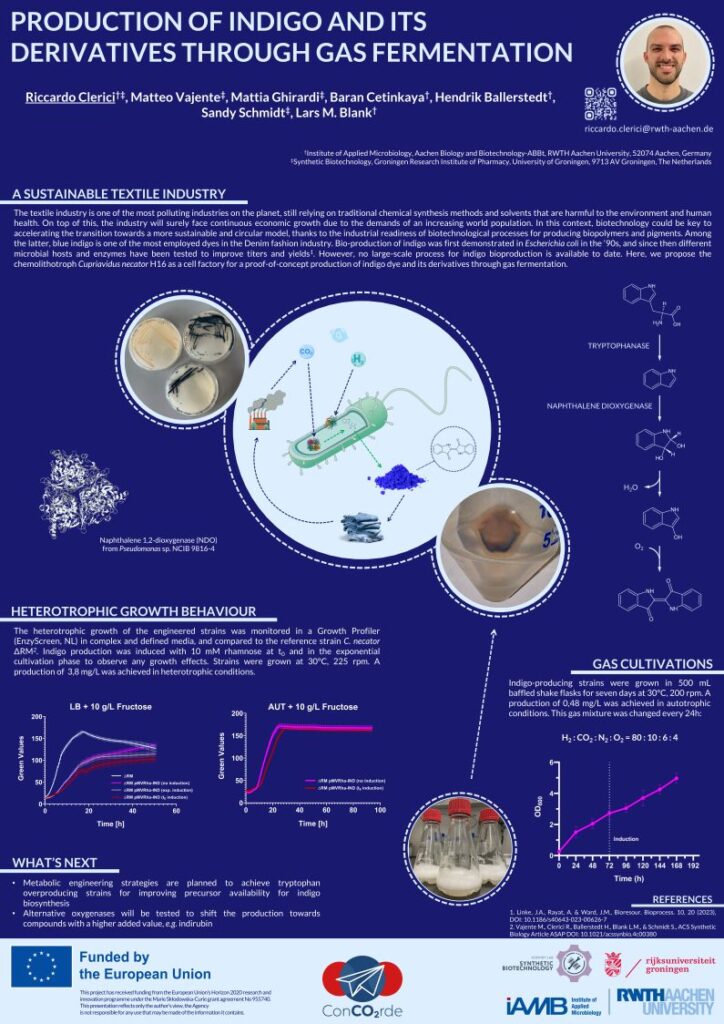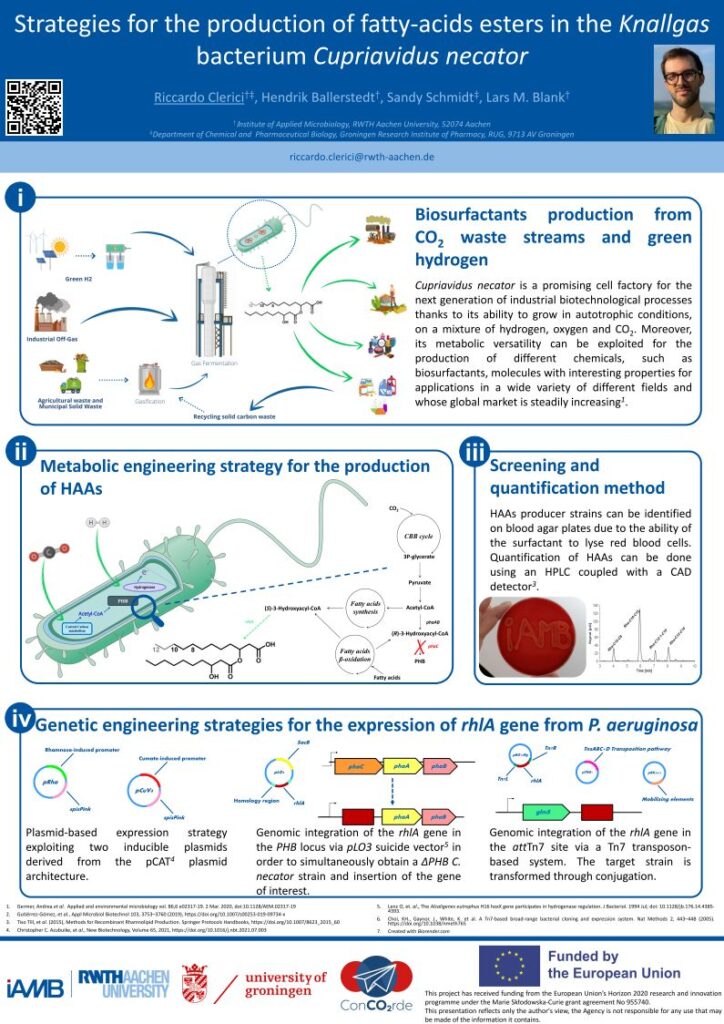Extreme weather and climate-related events are becoming more frequent and severe worldwide, causing irreversible environmental, economic, and social damage. The scientific community has identified climate change as the primary driver of these events, which are exacerbated by the current „take-make-dispose“ economic model. To prevent reaching a point of no return, a transition to a circular, bio-based economy is more urgent than ever. Among the industries with the largest environmental footprint, the textile sector is set to experience continued growth in the coming years due to the demands of a growing global population. Unfortunately, this industry still relies on non-biodegradable materials and environmentally harmful chemical processes. However, biotechnology presents a promising solution, offering the potential to accelerate the transition toward sustainable production methods. The technological advancements in biotechnology now make it possible to recycle and produce biodegradable textile materials and dyes. In this context, one of the most widely used dyes in the Denim fashion industry, blue indigo, is still produced on large scale through highly polluting and hazardous chemicals. Bio-production of indigo was first demonstrated in Escherichia coli in the 90s, and since then different microbial hosts and enzymes have been tested to improve titers and yields. However, no large-scale process for indigo bioproduction is available to date. In the ConCO2rde project, the chemolithoautotrophic bacterium Cupriavidus necator H16 was genetically engineered with heterologous genes to produce indigo for the first time. This newly engineered strain was used as a cell factory for proof-of-concept production of the indigo dye through gas fermentation. Indigo production was achieved by expressing a synthetic operon containing a naphthalene dioxygenase (NDO), a member of the Rieske oxygenase family. This breakthrough also demonstrated that C. necator is a promising host for expressing this class of enzymes, addressing a long-standing challenge in the Rieske oxygenase community to identify an ideal expression host. This significant achievement lays the groundwork for future research aimed at improving the titers and yields of indigo production, with the goal of making the process economically viable on an industrial scale. Additionally, exploring new enzymes or protein engineering strategies could enable the production of valuable indigo derivatives.



Vajente, M., Clerici, R., Ballerstedt, H., Blank, L. M. & Schmidt, S. Using Cupriavidus necator H16 to Provide a Roadmap for Increasing Electroporation Efficiency in Nonmodel Bacteria. ACS Synth. Biol. (2024) doi:10.1021/ACSSYNBIO.4C00380.
Link to publication:10.1021/acssynbio.4c00380
Please fiind all ConCO2rde publications and data (coming soon) at our ConCO2rde community at Zenodo:

